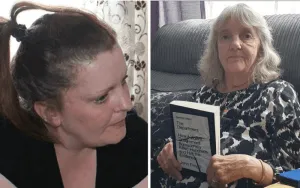The Department for Work and Pensions (DWP) is failing to investigate the suicides of hundreds of benefit claimants every year, despite the vital lessons it could learn from such inquiries, new analysis of official figures suggests.
In more than five years, DWP has carried out secret internal process reviews (IPRs) into just 69 suicides of benefit claimants.
But analysis by Disability News Service (DNS) of Office for National Statistics (ONS) and DWP figures suggests there could have been as many as 750 suicides of working-age benefit claimants in 2018 alone, and possibly even more.
DWP’s own guidance says it should carry out an IPR every time it hears of a suicide of a benefit claimant, even if there are no allegations that its actions contributed to the death.
Although the DNS analysis* is based on rough estimates, and has not been verified by ONS or DWP, it strongly suggests that ministers are missing out on learning the lessons from hundreds of cases every year when benefit claimants have taken their own lives.
Reports stretching back over the last decade have shown how such deaths have often exposed how DWP policies and practices failed to protect disabled claimants in vulnerable situations.
Earlier this month, in the latest such case, an inquest heard how an autistic man took his own life six days after being told to attend a “fitness for work” assessment, despite DWP being repeatedly warned that its actions were making him suicidal.
In February, a National Audit Office (NAO) report revealed that DWP did not have a robust way in which it could learn of suicides of benefit claimants, and often had to rely on being informed by claimants’ families or the media.
The NAO report said DWP had only launched nine IPRs since March 2016 as a result of being contacted by coroners, who carry out inquests into every death suspected of being a suicide.
Anita Bellows, a researcher with Disabled People Against Cuts, said: “Had DWP been serious about monitoring deaths of claimants by suicide, it would have put into place a system ensuring the systematic reporting by coroners of such occurrences.
“It is the DWP’s responsibility to ensure that government policies do no harm.
“The DWP should not rely on local or national press, bereaved families or coroners’ discretion to highlight the deaths of claimants by suicide, and it should proactively look for cases (meaning people) whose deaths the benefit system can have contributed to.
“That is what a responsible and accountable government’s department should do. That it has not been done is a scandal.”
The grassroots user-led group Recovery In The Bin (RiTB) said that its members “know from bitter experience that the state protects itself from blame in harm and deaths, whether it is DWP or healthcare inpatient settings”.
It also said it believed that the coroner system was “not fit to find responsibility” for deaths, although it hoped that a helpful Court of Appeal ruling last year would lead to “more findings against the abusive DWP regime”.
An RiTB spokesperson said: “We also wish more medical professionals were more ready to accept the role of both harm caused by healthcare and the hostile environment fostered by the DWP in people’s distress.
“At present it does feel to us that the UK state wants us dead and is taking measures to bring our deaths about.”
Debbie Abrahams, MP for Oldham East and Saddleworth, who has campaigned for years to address the deaths of social security claimants and DWP’s safeguarding failures, called for an investigation into the DNS figures.
She said: “It is very worrying that when we compare the actual number of claimant deaths by suicide reviewed by the government’s Department for Work and Pensions – 69 over five years – to the estimated number that DNS has calculated from publicly available data – 750 a year – there is a huge difference warranting investigation.
“After years of unacceptable obfuscation and delays, the failure of the government to act to address the deaths of claimants must be clear to all.
“I once again call for a full, independent inquiry into these deaths and the part played by our woefully inadequate social security system.”
A DWP spokesperson refused to explain why so few IPRs had been undertaken into suicides of benefit claimants; whether the department agreed that it should carry out more such reviews as a way of learning more lessons and saving more lives; and what action it would take to ensure that it is told of as many suicides of claimants as possible.
But she said in a statement: “We have strengthened the quality and recording of data on our internal process reviews to improve the service we provide to all our claimants.
“Our absolute priority is to ensure that people continue to get the support that they are entitled to.”
*DWP told the National Audit Office in a report published in February that there had been 69 IPRs after suicides since 2014-15 (PDF); in 2018, according to ONS, there were 4,542 suicides of men and women (and children) aged between 10 and 64; DWP says there were 6.8 million people claiming working-age benefits in February 2019, while ONS says the working-age population of UK was 41.3 million people in the February to April 2019 period. This suggests that there could have been (approximately) 750 suicides of working-age benefit claimants in 2018
**The following organisations are among those that could be able to offer support if you have been affected by the issues raised in this article: Samaritans, Papyrus, Mind, SOS Silence of Suicide and Rethink
A note from the editor:
Please consider making a voluntary financial contribution to support the work of DNS and allow it to continue producing independent, carefully-researched news stories that focus on the lives and rights of disabled people and their user-led organisations.
Please do not contribute if you cannot afford to do so, and please note that DNS is not a charity. It is run and owned by disabled journalist John Pring and has been from its launch in April 2009.
Thank you for anything you can do to support the work of DNS…

 Insurance industry silent over whether it lobbied DWP to cut disability benefits
Insurance industry silent over whether it lobbied DWP to cut disability benefits DWP hides truth from coroner on exactly what happened in lead-up to Jodey Whiting’s suicide
DWP hides truth from coroner on exactly what happened in lead-up to Jodey Whiting’s suicide Call for public inquiry into deaths after coroner rules suicide was ‘triggered’ by DWP
Call for public inquiry into deaths after coroner rules suicide was ‘triggered’ by DWP